Site Audit Results Report
In this guideline, we will cover a summary of audit results from domain information, crawl depth, HTTP status codes, detail pages, and more. Based on the audit process that has been carried out, you will see nine previews of the audit results on the following page.
Domain Information
The domain information preview will show the results of the audit score obtained, the maximum number of pages that can be crawled, the start to end time of the crawling process, crawler type, and crawl status. In addition, there is a piece of advanced domain information that includes a CMS report, IP address, and the server your domain uses.
The audit score shows the value obtained from the website health evaluation that has been carried out. The higher the score obtained, the better the condition and quality of the website. Fix immediately if the audit results show a low score.
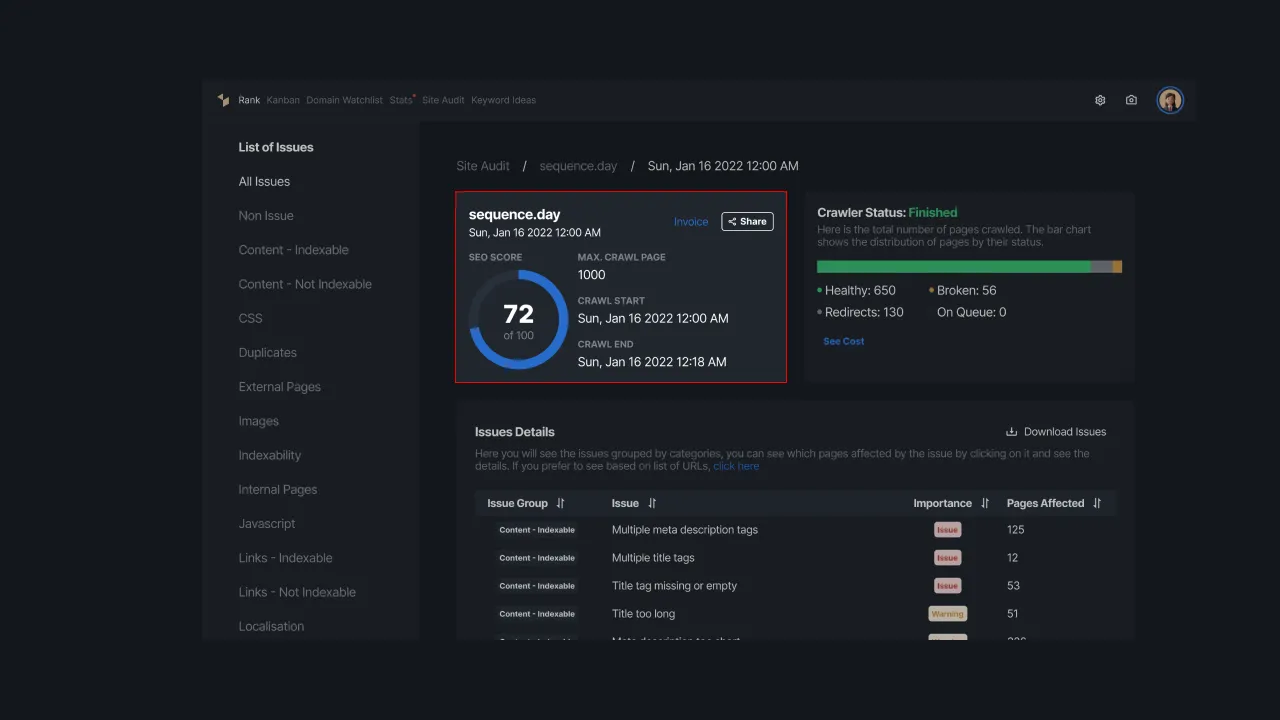 |
|---|
| Figure 1 - Domain Information |
Crawler Status
Crawler Status shows the progress of the crawling process that is being carried out through the data on the number of pages that have been crawled. The done status indicates that the entire page has been crawled, while the in-progress status indicates that the system's crawling process is still ongoing.
In addition to displaying crawler status, we also provide distribution data from pages that have been successfully crawled. Each successfully crawled link will be accumulated based on the following four link status categories:
- Healthy: Crawled links are in good condition and no issues were found while loading page content.
- Broken: The link was having crawling problems so it couldn't display the content of the page it was supposed to be showing.
- Redirect: A link that directs the crawler to another page.
- On Queue: Links are waiting their turn to be crawled by the User Agent.
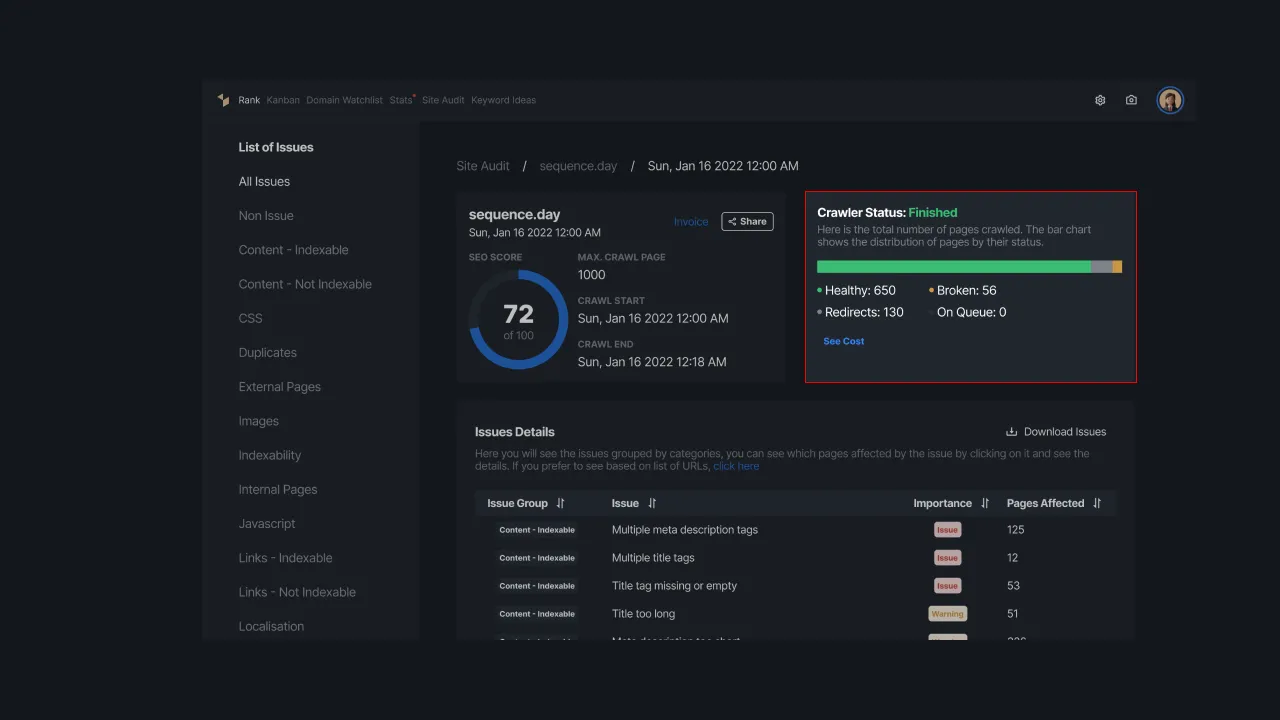 |
|---|
| Figure 2 - Crawler Status |
Issue Detail
The page status on the audit results is divided into two, namely, pages in good condition and pages that have crawling problems. We will display the total links from each category of the page status. Click the arrow icon next to the link totals to view the detailed status of the page that lists the links in good or bad condition.
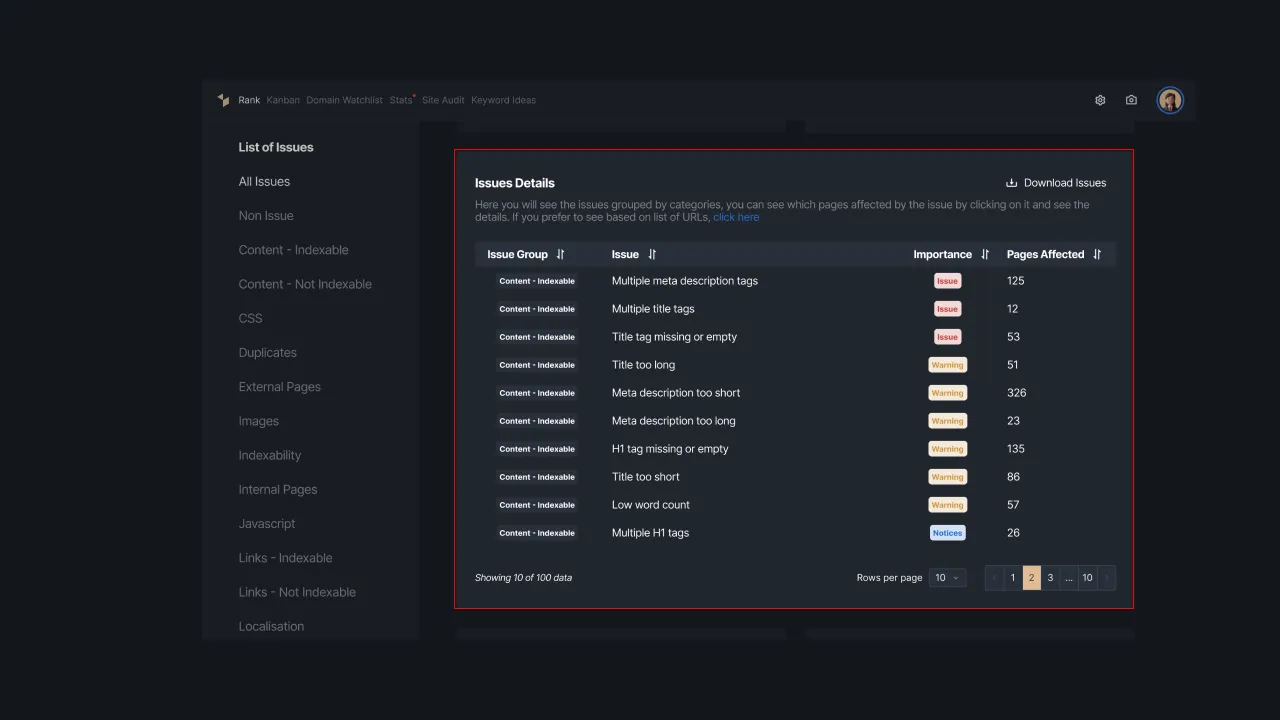 |
|---|
| Figure 3 - Issue detail |
Crawl Depth
Crawl depth shows the depth of links that the crawler explores, determined by how many clicks it takes to reach a certain page from the main page. The first crawled page is at level 0, and level 1 indicates the first clicked link from that page.
This report gives web owners an idea of how easy it is to access certain pages from the main page. If you have a lot of URLs at levels 4-10, there's a good chance that crawlers will have trouble accessing and indexing those pages. The easier the URL is to access, the better your site will rank in search results.
We present a column graph containing the same level of the page spread. Click on any of the data to view detailed crawl depth reports at a given level, including links, HTTP status codes, crawl depth information, initial link totals, and total links to go to.
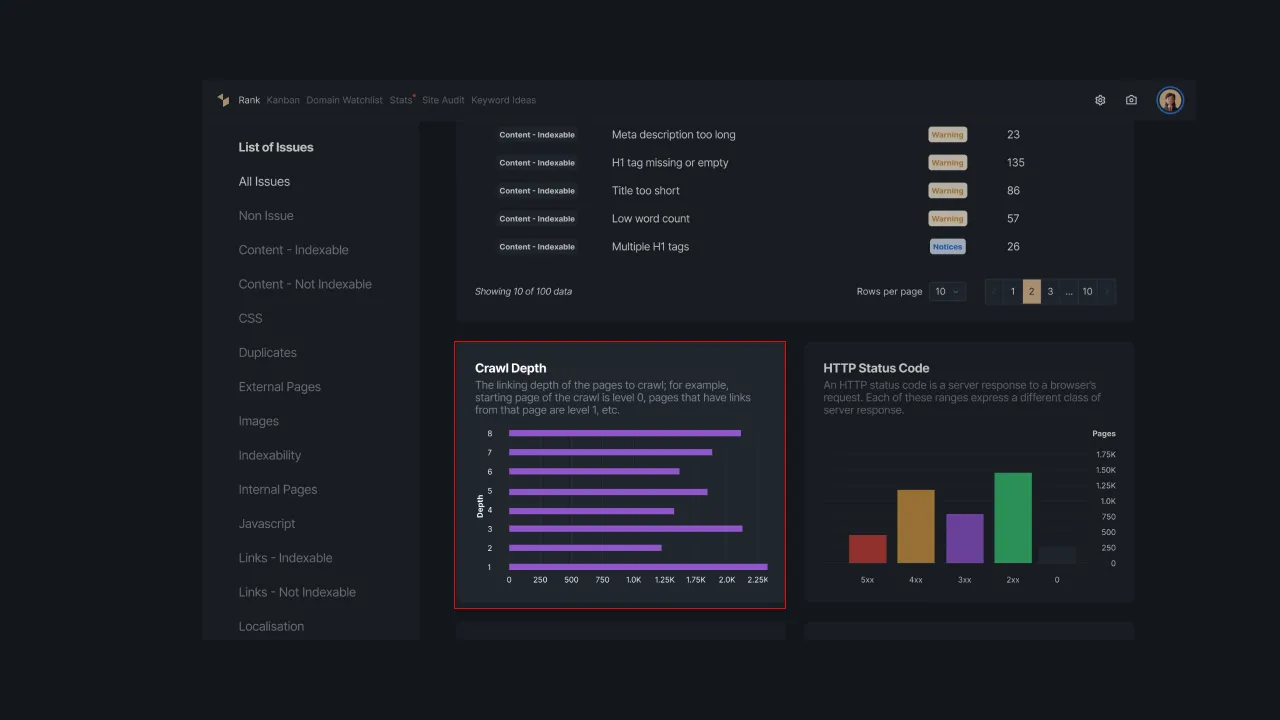 |
|---|
| Figure 4 - Crawl Depth Report |
HTTP Status Code
This report will show the distribution of the HTTP status codes on each of the crawled links. Types of HTTP status codes include a 5xx status code indicating a server error, a 4xx status code indicating a client error, a 3xx status code indicating a redirect, a 2xx status code indicating a successful request, and a status code of 0 indicating no response
We accumulate links for each type of HTTP status code, then present them in a column graph. The vertical axis in the graph shows the total number of successfully crawled pages, while the horizontal axis shows the HTTP status code type.
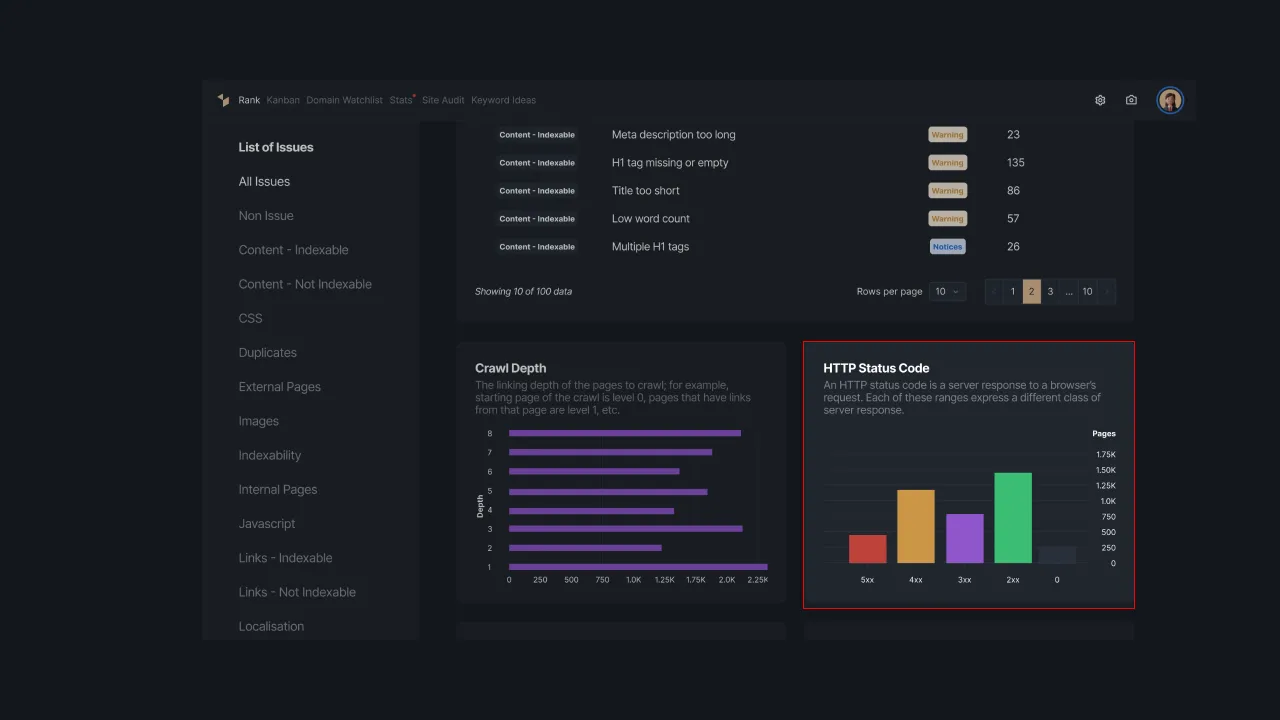 |
|---|
| Figure 5 - HTTP Status Code Distribution |
Checker
Through this checker tool, we will check the presence of a sitemap, robot.txt file, internal links, to external links on your website. Make sure your site has these files to make it easier for crawlers to run the crawling process. Sites that are not indexed well by search engines are more difficult to show in search results.
Click on link totals to view detailed external and internal link reports that include a list of links, HTTP status codes, crawl depth, initial link totals, and total links to go to.
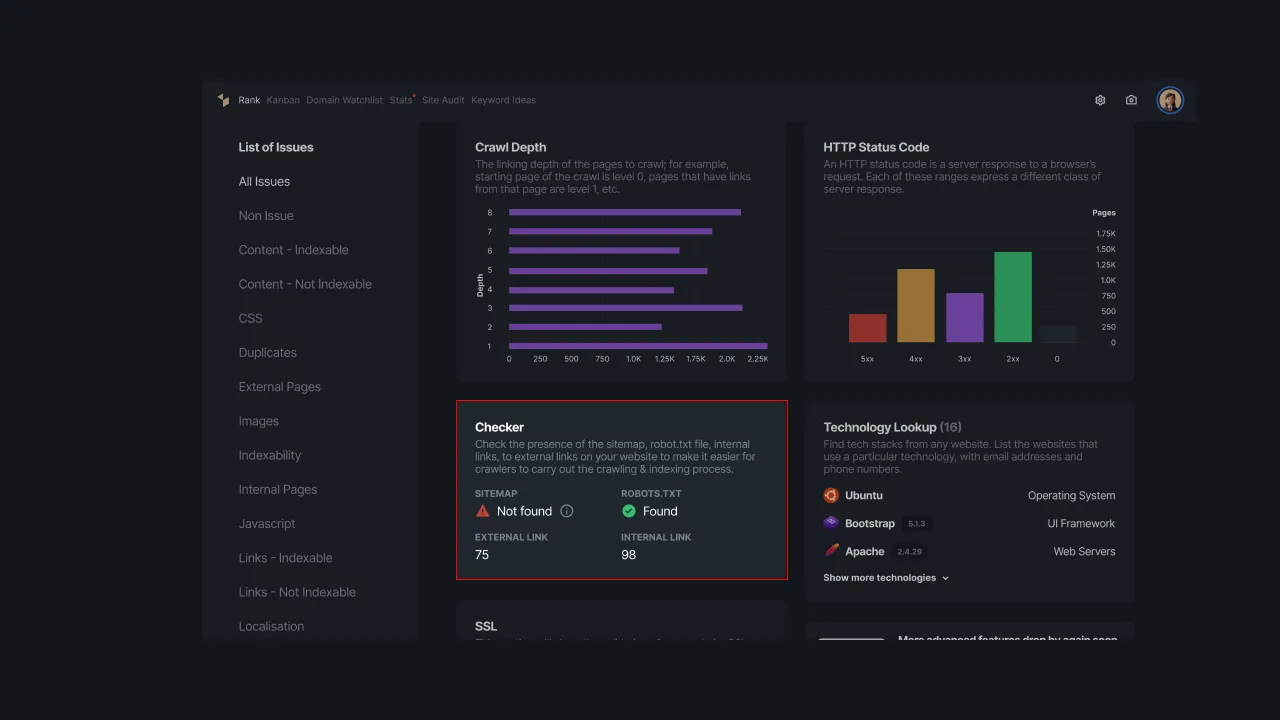 |
|---|
| Figure 6 - Checker |
SSL Checker
One of the ranking factors in search results is the use of HTTPS. Therefore, it is important for web owners to implement SSL so that they can maintain website security. Through SSL checking, you will find out the expiration date and validity information of the SSL certificate you have.
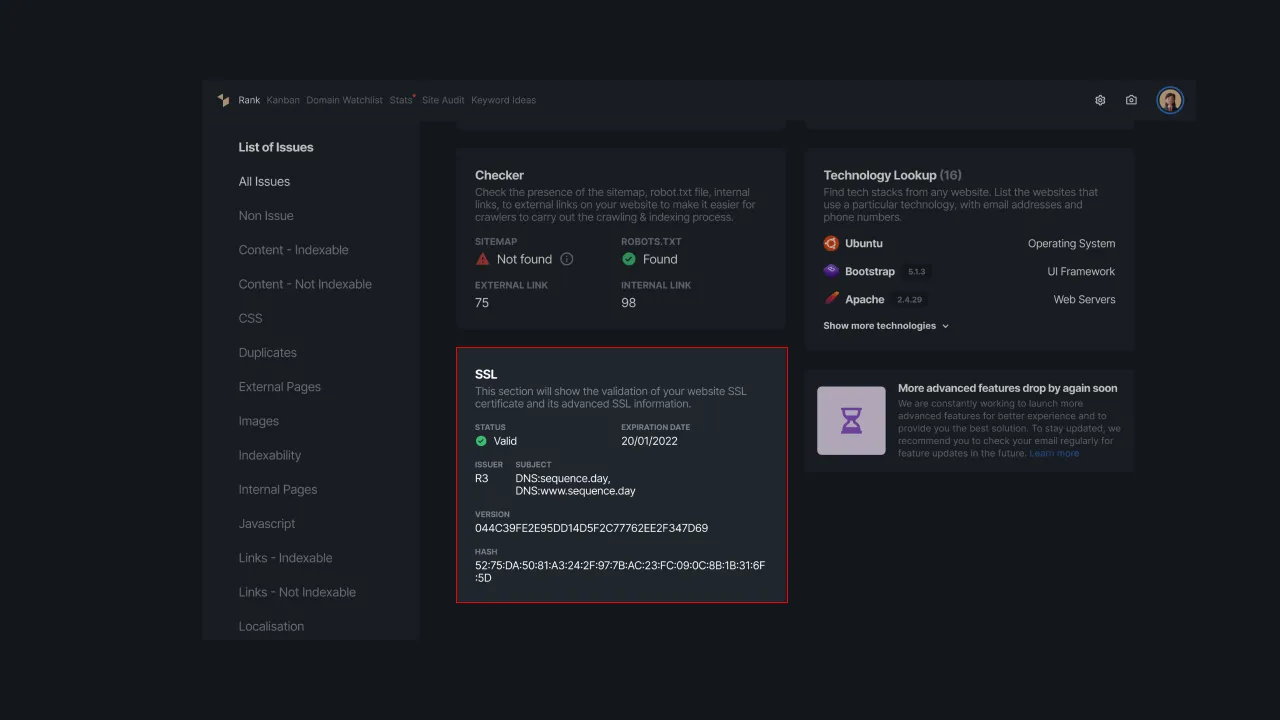 |
|---|
| Figure 7 - SSL Validity Information |
URL Page Details
The page details report displays a list of links that have been successfully crawled. Click the settings icon in the Action column to view the audit results for each URL in more detail. You will be redirected to the report detail page which contains several menus, including
- Basic — load the HTML structure implementation report on the audited page.
- Links — presents a list of links in the selected URL and the state of the links.
- Page Performance — contains the results of web performance testing, core web vitals, and page timing from the selected URL.
- Redirection — displays a report of successfully crawled redirect links.
- On Content — displays information on keyword frequency, keyword density, and readability index of all content at the selected URL.
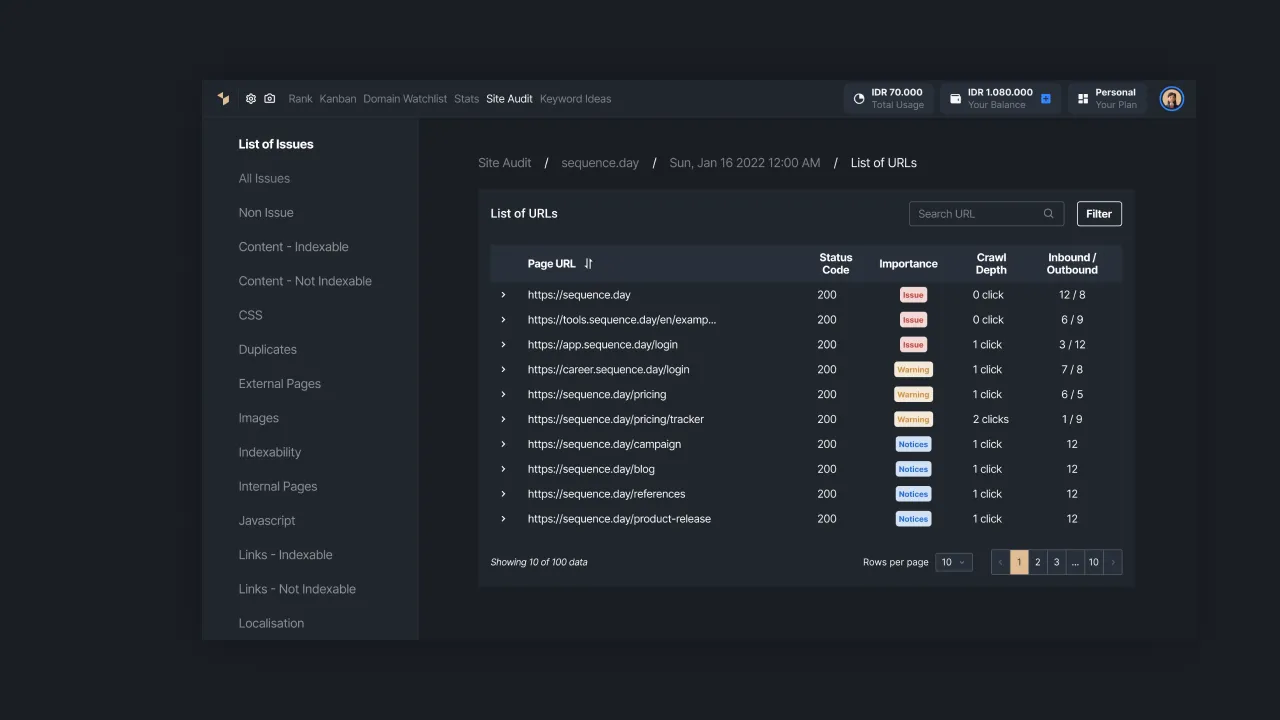 |
|---|
| Figure 8 - Page detail report |
That is a brief guideline that discusses the summary of audit results in Sequence. Some audit results can be clicked to view detailed reports on each selected option. Find your domain problem and set the optimization steps now!